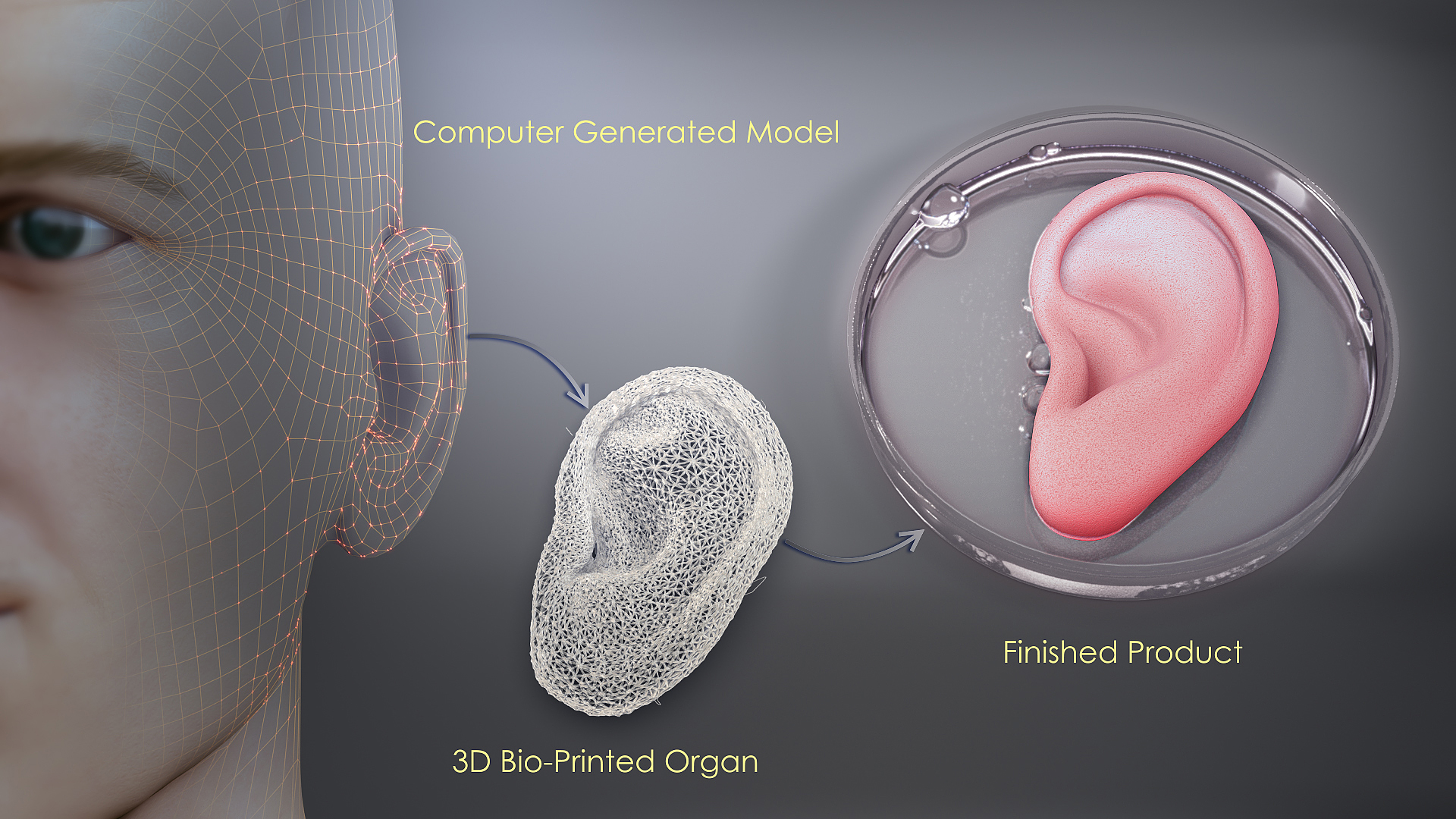Good news: Medicine is getting better in increasing the lifespan.
A not-so-good effect: As more and more population gets older, the rate of organ failure rises.
Solution?
Organ Transplant?
Well, not really.
Over the last decade, the number of patients waiting for a transplant has doubled, with no growth in the number of actual transplants.
That is one concerning issue of an aging population.
So the most irking question in such a situation is...
Can we grow organs instead of transplanting them?
That was the question surgeon Anthony Atala asked during a TED talk in 2010 that went viral.
In an attempt to address this serious problem and fill the organ shortage void, Dr. Atala, the director of Wake Forest Institute for Regenerative Medicine, collected stem cells from a patient with a failing bladder, grew a new bladder and transplanted it into the patient. And recently he also did an early experiment to print a transplantable kidney.
How did he do it?
He uses a 800 pound steel machine called 'ITOP' or Integrated Tissue and Organ Printing System. The machine uses human cells (instead of ink) and generates lab-grown organs that eventually are capable of being surgically implanted into the body. To ensure the end product is ‘tailor-made’ for the patients, data from CT and MRI scans is also fed into it.
3D bioprinting involves additional complexities, such as the choice of materials, cell types, growth and differentiation factors, and technical challenges related to the sensitivities of living cells and the construction of tissues. Addressing these complexities requires the integration of technologies from the fields of engineering, biomaterials science, cell biology, physics, and medicine.
Some highlights from the past
Researchers from the University of Edinburgh have studied and described a valve-based cell printer that spits out living human embryonic stem cells. These cells could be used to synthesize tissue, test drugs or grow replacement organs. Their work was published in the journal Science.
Forgacs and colleagues from the University of Missouri in Columbia printed arteries, veins and sheets of cardiac tissue that "beat" like a real heart. They started a company called Organovo to bring these products to market.
Lothar Koch et al from Laser Center Hannover in Germany laser-printed skin cells in the first year and then used laser bioprinting to create grafts from stem cells that could develop into bone and cartilage the next year. A group at the German Fraunhofer Institute has also created blood vessels by printing artificial biological molecules with a 3D inkjet printer and shaping them with a laser.
Ralf Gaebel of the University of Rostock, Germany, and colleagues made a “heart patch” using a computerized laser-based bioprinting technique. When tested on rats, these patches showed improvement in function.
A group of researchers of Harvard University Medical School and Brigham and Women's Hospital, led by biomedical engineer Utkan Demirci, used an automated system to print ovarian cancer cells onto a gel in a lab dish where the cells could be grown and studied. The bioprinting approach opens doors for scientists to study tumor cells in a convenient environment and even test drugs on them.
Coming back…
As the new organ/tissue is synthesized out of the patient’s own cells, there's no risk of rejection.
In a study published by Nature Biotechnology, Atala and other Wake Forest researchers reported that the ‘printed’ cartilage, bone and muscle tissue were successfully implanted in rodents, and after months of monitoring the tissue even developed a system of blood vessels and nerves.
The team is already printing human ears, bones, heart tissues, liver tissues and kidney tissues.
However, the ITOP generated parts have not been implanted into a human yet. That's because they are currently going through the regulatory process with the FDA. Dr. Atala is positive about getting an FDA approval on their extensive testing and the team is preparing to produce tissues for anxious and needy patients.
Who knows, in the decades ahead, ordering tissues or organs online may be possible? With the way technology is moving, the HBO series Westworld may soon be reality!
Reconstructive Surgery For Leprosy Treatment
Leprosy or Hansen’s disease is a chronic granulomatous infection of skin tissue and peripheral nerves caused by Mycobacterium leprae, an obligate intracellular bacterium. Read More..









